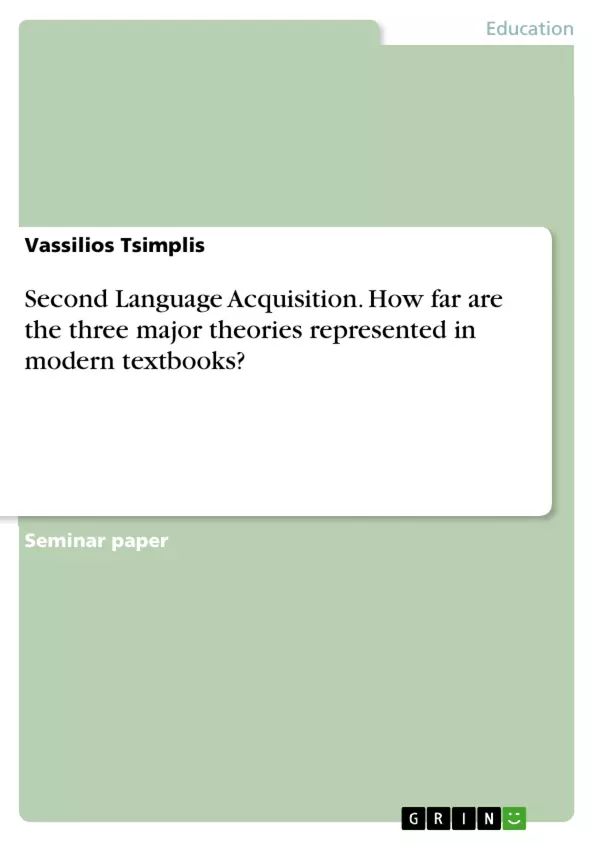The main goal of this term paper is to examine in how far the three major SLA theories, named behaviourism, innatism, and interactionism, are represented in modern textbooks. Initially, the various theories need to be explained and figured out. What point of view do these theories have of learners? Which are the differences between them? In this way, one can gain an overview. Afterwards, different textbooks from the ninth grade with several tasks will be analysed regarding the approaches of SLA. Consequently, the results will be discussed and evaluated in order to answer the research question relating to the representation of SLA theories in modern textbooks.
Most of the people in the world speak more than one language. Except for the native language, many people want to acquire other languages, and as never before, humans depend on learning a second language. In times of globalisation, foreign language profi- ciency is becoming increasingly important. Speaking multiple languages can even impact one’s life and career prospects. In most cases, the prerequisite for entering the interna- tional business world is the knowledge of English. Therefore, especially teaching English has become crucial for students’ education in almost every country. According to this, the study of how people acquire a second language plays an important role for foreign language teachers. Nevertheless, what does it mean to acquire a second language? There may be numerous answers to this question since there are many different hypotheses made about Second Language Acquisition (SLA).
Inhaltsverzeichnis (Table of Contents)
- Introduction
- Theoretical background
- Second Language Acquisition
- Behaviourism
- Innatism
- Interactionism
- Analysis
- Discussion
- Conclusion
- References
Zielsetzung und Themenschwerpunkte (Objectives and Key Themes)
This term paper aims to investigate the representation of three prominent Second Language Acquisition (SLA) theories – behaviorism, innatism, and interactionism – in modern textbooks. It aims to provide a comprehensive overview of these theories, including their perspectives on language learning, their key differences, and their implications for teaching practice. The paper will also analyze specific examples of how these theories are reflected in ninth-grade textbooks and their tasks.
- Second Language Acquisition Theories
- Behaviorism and its role in language learning
- Innatism and the innate capacity for language acquisition
- Interactionism and the role of social interaction in SLA
- Representation of SLA theories in modern textbooks
Zusammenfassung der Kapitel (Chapter Summaries)
- Introduction: This chapter introduces the topic of Second Language Acquisition (SLA) and its relevance in an increasingly globalized world. It highlights the growing importance of English proficiency and the need to understand how people learn a second language. The chapter establishes the research question, focusing on the representation of major SLA theories in modern textbooks.
- Theoretical background: This chapter presents a detailed overview of three main SLA theories: behaviorism, innatism, and interactionism. It discusses the origins, core principles, and key proponents of each theory. The chapter emphasizes the differences in their perspectives on language learning, including the role of environmental factors, innate abilities, and social interactions.
- Analysis: This chapter delves into the analysis of specific textbooks, focusing on how the different SLA theories are reflected in their content and tasks. The chapter provides concrete examples of how these theories are applied in classroom practice.
Schlüsselwörter (Keywords)
This term paper focuses on the key concepts of Second Language Acquisition (SLA), exploring the three major theories of behaviorism, innatism, and interactionism. It examines how these theories are represented in modern textbooks, specifically focusing on ninth-grade materials. The paper delves into the perspectives of each theory on language learning, including the role of environmental factors, innate abilities, and social interactions.
- Quote paper
- Vassilios Tsimplis (Author), 2020, Second Language Acquisition. How far are the three major theories represented in modern textbooks?, Munich, GRIN Verlag, https://www.grin.com/document/1196332



